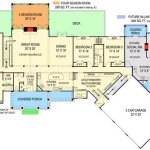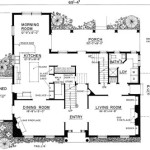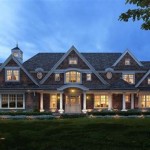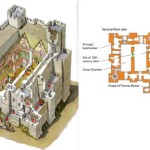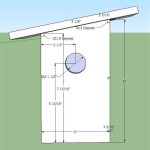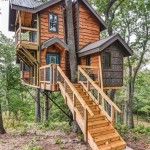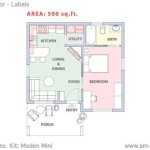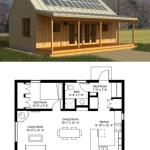Southern Living Low Country Home Plans
The allure of Lowcountry living, with its gentle breezes, moss-draped oaks, and proximity to the water, has captured the hearts of many. This distinct Southern charm translates seamlessly into architecture, resulting in the popular Lowcountry home style. Southern Living, a trusted source for Southern lifestyle and design, offers a diverse collection of Lowcountry home plans designed to embrace this unique aesthetic and lifestyle.
Key Features of Southern Living Lowcountry Home Plans
Southern Living Lowcountry home plans incorporate several architectural elements that define the style. These features contribute to the overall aesthetic and functionality of the homes, creating spaces that are both beautiful and practical for Lowcountry living.
*
Elevated Foundations:
Designed to protect against flooding and maximize breezes, elevated foundations are a hallmark of Lowcountry architecture. These raised structures also create covered outdoor spaces underneath, perfect for relaxing and entertaining. *Large Porches and Verandas:
Outdoor living is central to the Lowcountry lifestyle. Expansive porches and verandas, often wrapping around multiple sides of the house, provide ample space for enjoying the pleasant climate and scenic views. *Generous Windows and Doors:
Maximizing natural light and ventilation are key considerations in Lowcountry design. Large windows and doors, strategically placed to capture breezes and views, create bright and airy interiors. *Metal Roofs:
Durable and weather-resistant, metal roofs are a practical and stylish choice for Lowcountry homes. They offer protection from the elements and contribute to the classic Lowcountry aesthetic.Architectural Styles Within Lowcountry Designs
While sharing common characteristics, Lowcountry homes also encompass various architectural sub-styles, offering homeowners a range of options to suit individual preferences. These styles blend traditional elements with contemporary influences, resulting in a diverse selection of home designs.
*
Classic Lowcountry:
This style emphasizes traditional features such as wide porches, symmetrical facades, and dormer windows. It often incorporates wood siding and shutters, creating a timeless and elegant appearance. *Coastal Farmhouse:
Blending rustic charm with coastal elements, this style features shiplap siding, exposed beams, and farmhouse-inspired details. It exudes a relaxed and welcoming atmosphere. *Modern Lowcountry:
This contemporary take on the traditional style features clean lines, open floor plans, and minimalist detailing. It often incorporates mixed materials such as metal and glass, while still maintaining the core principles of Lowcountry design.Benefits of Choosing a Southern Living Plan
Opting for a Southern Living Lowcountry home plan provides homeowners with several advantages, from design expertise to brand recognition. These benefits contribute to a smoother and more satisfying building experience.
*
Professional Design Expertise:
Southern Living collaborates with experienced architects and designers to create well-thought-out floor plans that prioritize functionality and aesthetics. These plans are designed to maximize space and create comfortable living environments. *Brand Recognition and Resale Value:
The Southern Living brand carries significant weight in the real estate market. Building a Southern Living home can enhance resale value and attract potential buyers who recognize the brand's reputation for quality and style. *Customizable Options:
While offering pre-designed plans, Southern Living often provides options for customization, allowing homeowners to personalize their homes to meet specific needs and preferences. This flexibility ensures that the final product reflects individual tastes.Considerations for Building a Lowcountry Home
Building a Lowcountry home requires careful planning and consideration of various factors specific to the environment and lifestyle. Addressing these factors upfront ensures a successful and enjoyable building process.
*
Site Selection:
Choosing the right location is crucial for maximizing the benefits of Lowcountry living. Proximity to water, prevailing breezes, and scenic views are important factors to consider. *Material Selection:
Selecting durable and weather-resistant materials is essential for withstanding the coastal climate. Materials such as fiber cement siding, impact-resistant windows, and treated lumber are recommended. *Local Building Codes:
Understanding and adhering to local building codes and regulations, particularly those related to coastal construction and flood zones, is essential for ensuring a safe and compliant structure.Finding the Right Lowcountry Plan
Navigating the selection of Lowcountry home plans can be simplified by considering specific needs and preferences. Identifying priorities and consulting with professionals can streamline the decision-making process.
*
Determine Your Needs:
Consider the desired size, number of bedrooms and bathrooms, and specific features required for your lifestyle. *Browse Online Resources:
Southern Living's website and other online platforms offer extensive collections of Lowcountry home plans, allowing for easy browsing and comparison. *Consult with Builders and Architects:
Working with experienced professionals can provide valuable insights and guidance in selecting the right plan and navigating the building process.Adapting Lowcountry Style to Different Regions
While originating in the coastal South, the appeal of Lowcountry architecture has extended beyond its geographical boundaries. Adapting the style to different climates and regions requires careful consideration of specific factors.
*
Climate Considerations:
Modifications may be necessary to accommodate different climates, such as incorporating additional insulation in colder regions or enhancing ventilation in hotter climates. *Material Adjustments:
Choosing appropriate materials for the local environment is crucial. Substituting certain materials, such as using stucco instead of wood siding in dry climates, can enhance durability and longevity. *Maintaining Design Integrity:
While adapting the style, it’s essential to retain the core design principles of Lowcountry architecture, such as elevated foundations, large porches, and generous windows, to maintain the authentic aesthetic.
Lowcountry Farmhouse House Plan Country Cottage Plans Southern Living

Low Country Cottage Style Home With Southern Charm At Its Finest Living House Plans Homes

Lowcountry Farmhouse Craftsman House Plans Southern Cottage

Low Country Farmhouse Two Story Modern Plan Southern Living

Low Country Architecture Beach House Plans From Home Designs

Low Country Farmhouse Two Story Modern Plan Southern Living

Lowcountry Style Country Cottage House Plans

Modern Farmhouse Was The Most Popular Home Style Of 2024 5 Inspiring Design Plans

Pin On Southern Living Hawthorn House Plan

